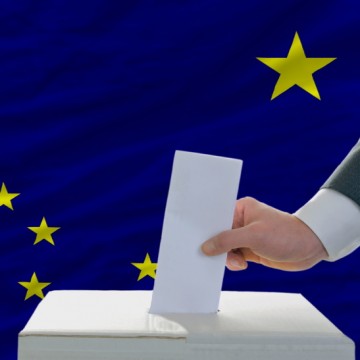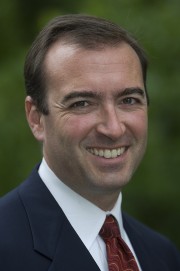Jon Coney: Why I’m Voting Yes on Measure 90
Tuesday, November 04, 2014

Photo credit: iStock
Why am I so confident that Measure 90 will do this? From personal experience.
In 2008 I had the unique privilege of running for the Oregon Legislature. This was House District 45 in Northeast Portland – an area so heavily Democratic that the winner of the May Primary Election is the de-facto winner of the November General Election.
And here’s how it worked: as a candidate, I would zero-in on only those Democratic voters who the public record showed were frequent voters, and were therefore likely to vote in the May Primary.
The downside to that? In my case, as with most candidates, it was not in my interest to converse with non-affiliated voters and listen to their views. Even in Northeast Portland, there are thousands of them.
Every day when I’d walk the district, I was shocked when the voter ID list essentially dictated that I had to skip over a half dozen houses before reaching a coveted frequent Democratic voter. I thought something was wrong with the list because often I’d walk past these houses and encounter people working in their yards or unloading their cars, and, noticing that I had “that look” of a candidate, they’d engage me in meaningful political conversation. But they couldn’t vote in my race.
Equally frustrating was when I’d get to that door of a frequent Democratic voter, only to wind up speaking to his or her spouse, parent, child, or roommate who was a voter, but not a registered Democrat (yes, there are a lot of politically split households). They couldn’t vote, either.
I could have just walked away. But I quickly found myself engaged in great conversations with these fellow Portlanders. They were sensible, thoughtful, and cared deeply about our community. Many of them were excited about the Presidential Primary contest between Barack Obama and Hillary Clinton. You can imagine the looks on their faces when I had to tell them that they weren’t allowed to participate in that.
More achingly difficult, many of them told me that they “always vote for the Democrat” – but what they were referring to was the November General election. When I’d clarify that the real choice was being made in the May Primary, they were dismayed to learn that they couldn’t choose among those Democratic candidates.
I actually wound up carrying voter registration forms with me and urged them to join the Democratic Party. But few seemed interested in that. For a variety of reasons, they just didn’t want to carry a party label – a political marketplace trend that is growing every day in Oregon, especially among younger voters.
If this had been an isolated incident or two, it wouldn’t have caused me any alarm. But the sheer number of rock-solid Oregonians who I met in my experience as a candidate in a mere “down-ticket” race in Northeast Portland who had no voice in selecting their representatives was startling. Now extrapolate that across the entire state – more than 650,000 voters – and you can begin to grasp just how much of the actual population of Oregon our elected leaders are encouraged to avoid. That is wrong.
Measure 90 fixes that. It allows these people to cast a ballot for the major party candidates in the May Primary Election who will get elected in the November General Election. And over time, as we’re seeing in Washington and California now, our elected representatives will face a greater reservoir of our citizens to elect and inform them.
That is a formula – and an incentive -- for them to be more like all of us.

Banner Photo Credit: iStock
Related Articles
- Jim Ludwick: Ten Reasons Why I’m Voting No on Measure 88
- Rex Burkholder: Why I Am Voting Yes on Measure 88




Follow us on Pinterest Google + Facebook Twitter See It Read It